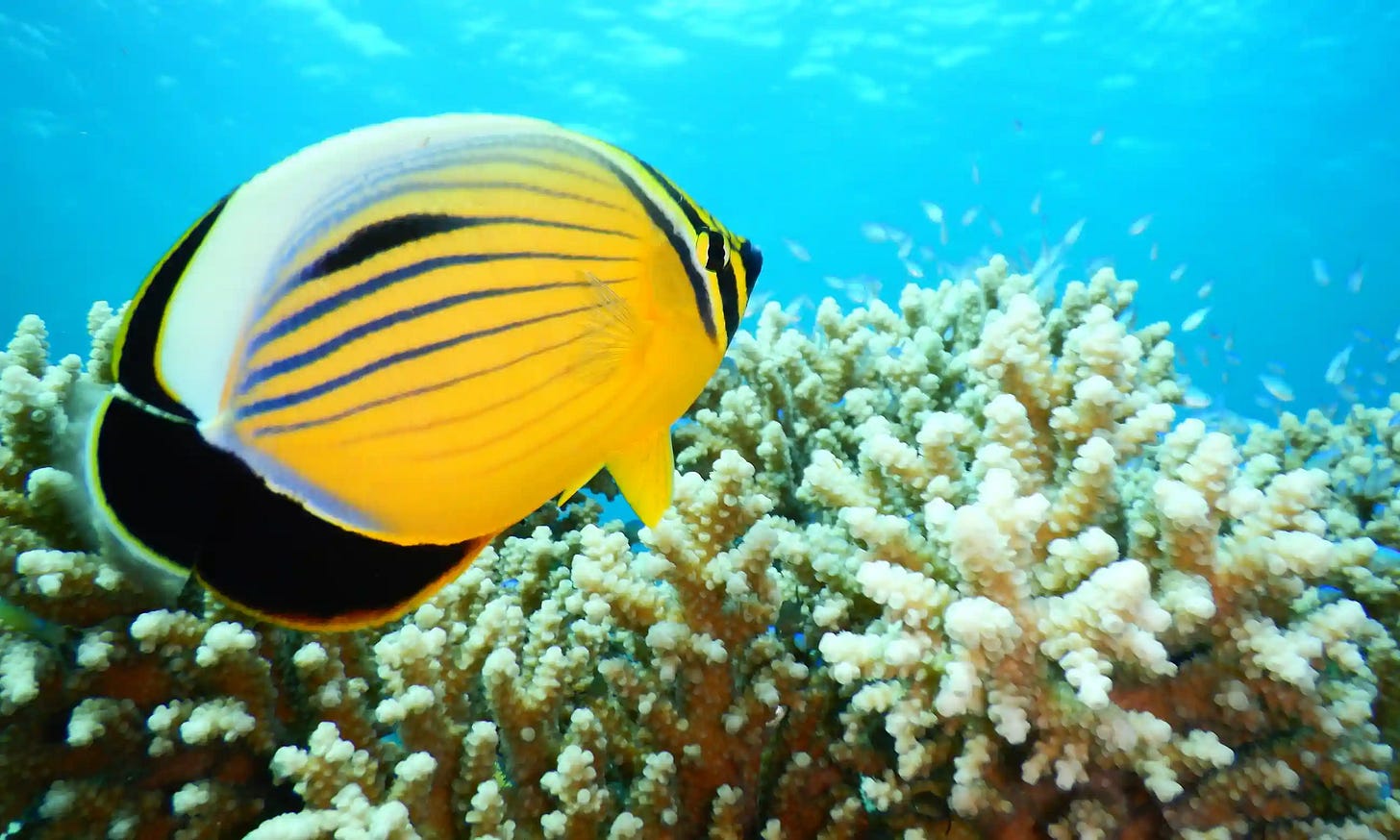FSO Safer: Environmental risks (Wildlife)
An oil spill would be a disaster for the Red Sea's fish, invertebrates, mammals, reptiles and birds.
[NOTE: Many of the findings quoted below on environmental risks is based on the Greenpeace briefing paper “FSO Safer: A Shipwreck In Slow Motion”, which in turn draws a lot on an article in Nature by Benjamin Q. Huynh et al called “Public health impacts of an imminent Red Sea oil spill.”]
Closely tied to the health of the Red Sea’s significant coral reef habitat are the sheer variety of living creatures both above and below its surface, which would be put at risk by an oil spill from the F.S.O. Safer in the following ways, as per the Greenpeace briefing paper:
Fish
The Red Sea region is home to 1,071 recorded fish species - out of which “138 (12.9%) are endemic to the Red Sea and 189 (14.1%) are endemic to the Red Sea and Gulf of Aden”. Also endemic (unique to the region) to the Red Sea are 15% of Red Sea crustaceans.
Using research findings related to the 2010 BP-owned Deepwater Horizon oil spill off the coast of the United States:
Analysis of fish caught after the incident found that they had been contaminated with toxic Polycyclic Aromatic Hydrocarbons (PAHs) which are released from crude oil, with laboratory analysis concluding “that it was highly likely that the PAH contamination of the fish came from the spill”.
These and other hydrocarbons are “toxic to fish, and in the short term can cause skin lesions; long-term exposure can affect fish reproduction, slow their growth and increase the risk of disease. Combined, these impacts can negatively affect fish population numbers”.
Further, when the crude oil is exposed to natural sunlight, it can actually increase the toxicity of PAHs, leading to decreased hatching rates amongst certain types of fish.
As noted elsewhere, adult fish exposed to oil “may experience reduced growth, enlarged livers, changes in heart and respiration rates, fin erosion, and reproduction impairment”. Fish eggs and larvae are also vulnerable to the toxic substance, while fish and shellfish can be rendered unsafe for human consumption.
Invertebrates
Invertebrates are creatures which do not possess a backbone or skeleton, and can very in size from microscopic to the size of giant squid.
In the Red Sea, there are an estimated 211 described echinoderms (starfish, sea urchins and sea cucumbers); 17 (8.1%) are endemic to the Red Sea and 21 (10%) to the region spanning the Red Sea to the Gulf of Aden.
Even if not all the 1.1 million oil barrels from the Safer were to leak into the environment, the impact could still be materially destructive:
A small-scale experiment was conducted on a simulated 5 cubic metres oil spill and found that oil contamination was found “up to 500 metres away on the sea surface and at least 8 metres deep”.
In particular it was found that “the number of zooplankton (microscopic animals that are important food sources for larger animals) decreased by half in just one day in the water beneath the oil”.
Mammals
16 species of whales and dolphins have been recorded in the Red Sea, although only nine have been regularly observed, including the Bryde’s whale and dolphins such as “false killer whale, Risso’s dolphin, Indian Ocean humpback dolphin, Indo-Pacific bottlenose dolphin, common bottlenose dolphin, pantropical spotted dolphin, spinner dolphin and Indo-Pacific common dolphin”.
Dugongs, which graze on seagrass, are already listed as vulnerable to extinction due to their propensity to getting caught in fishing nets and seagrass being under threat from coastal development.
The risk to these mammals from oil is that it can be inhaled with deleterious impacts on the immune system, lungs and reproduction.
Reptiles
All but two of the world’s seven species of turtle are found in the Red Sea: the leatherback, olive ridley, green, hawksbill and loggerhead.
They are not only a tourist attraction but also “play an important part in maintaining the ecology of both seagrass beds and coral reefs” and are already under threat from pollution and habitat destruction.
The risks to sea turtles from an oil spill is that because they breathe air, they need to come up to the surface to breathe and would then inhale the oil, even though they are capable of holding their breaths for long periods of time. Younger turtles stay quite close to the surface all the time as well; juvenile turtles can get trapped in oil and be mistaken for food.
Birds
When seabirds come into contact with oil, it can lead to the following:
Oil sticking to its feathers can cause them to mat and separate, negating their waterproofing function and ability to regulate temperature, and can lead to hypothermia. It can also restrict their ability to fly.
Birds will try and get the oil off by preening, which unfortunately can lead to ingesting the toxic oil as well as neglecting their other usual functions such as feeding and steering clear of predators - secondary ill effects can include “severe weight loss, anemia and dehydration”.
They can also “lose their buoyancy and beach themselves in their attempt to escape the cold water”.
In the next part of this series looking at the environmental risks of a Safer spill, we will look at the impact on coastal wetlands.



